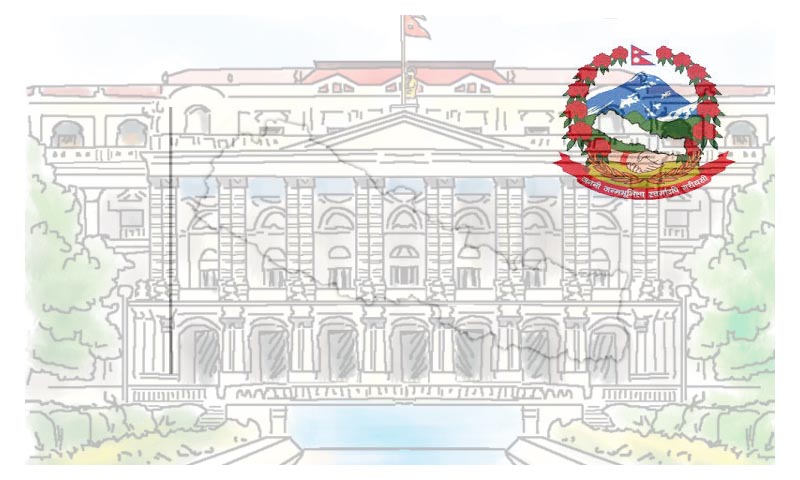Committee proposes 18 ministries in Centre
KATHMANDU: The high-level Federal Administrative Restructuring Committee has proposed 18 ministries including the Office of Prime Minister and Council of Ministers at the Centre (federal level).
The proposal presented by the Committee to the State Affairs Committee under the Legislature-Parliament states that such a number of ministries were seen suitable at the centre while analysing Nepal's constitution, the study report on fundamental rights, work details report, country's situation and other international practices.
Currently, there are the Office of the President, the Office of the Vice President, the Office of the Prime Minister and Council of Ministers and 28 ministers in the centre.
The Committee proposed to establish the Office of Prime Minister and Council of Ministers with the fixation of jurisdictions of the Secretariat of Council of Ministers to execute the general directives of governance, and to control and operate the government.
The Committee has proposed the Finance and Planning; Federal Affairs and General Administration; Law, Justice and Parliamentary Affairs; Industry, Commerce and Supplies; Tourism and Culture; and Agriculture, Cooperatives and Land Management ministries along with the explanation of their jurisdictions in the centre.
Likewise, it has proposed the Ministries of Home Affairs; Water Resources and Energy; Foreign Affairs; Physical Infrastructure, Transport and Civil Aviation; Defence; Education, Sports, and Science & Technology; Women, Inclusion and Social Justice; Information and Communications; Health; Human Resources; Youth, Labour and Employment; and Forest and Soil Conservation at the federal-level.
Coordinator of the Implementation Committee Kashi Raj Dahal said that the schedules of the singular and common rights stated in the constitution, the report on work elaboration, the work division regulation and the existing organisational structure as well as the study report on administrative restructuring, the report of the consultants, the suggestions from the ministries concerned, international practices and best practices, and the suggestions of the expert members have been taken as the basis while recommending the names of the ministries and their scope of work.
It is stated principles of organisation formation including the organisation structure in consonance to the functions, the principle of proximity and effectiveness of efficiency in service delivery have been adopted while determining the number of ministries.
As per the report, there are 8,590 offices including the six constitutional bodies at the centre, 57 departments, 18 department-level offices as well as regional, zonal, district and area-level offices. The report also mentions that there are 37 public corporations in the country.
The committee has also prepared a 23-point report containing the basic guidelines, principles and policies to be adopted while formulating the Acts and Regulations related to personnel administration at the federal, province and local levels.
Number of government staff at local level
The Interim Management Report on Operation of Local Level states that there shall be nine employees in the Rural Municipality, including the executive officer, an under-secretary or a section officer, and three employees at the Ward level of the Rural Municipality, including a nayab subba (non-Gazetted First Class officer) or a kharidar (non- Gazetted Second Class staffer) as the Ward Secretary. In case of the Municipality, the report has recommended 10 employees including an Under-Secretary level Executive Officer.






